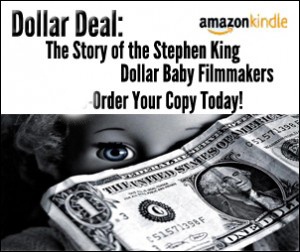At last week’s Film Independent Forum, Netflix Chief Content Officer Ted Sarandos offended theater owners and studio executives by insisting that theater owners “strangle innovation” and went on to criticize the current releasing model as “antiquated” and described the current feature film market as “”these cold spectacles that have to be sold around the world in order to recoup these huge marketing and production budgets.” As expected, Sarandos’ comments rattled some cages. Sarandos managed to stand steadfast when he appeared this week at the Bloomberg Business of Entertainment Breakfast, defending his comments and elaborating.
“Part of the really innovative distribution models” Sarandos said, “is that some of the most talented people in film are going there. Television is displacing movies.” Some film and TV fans I spoke with insist that Sarandos is correct and are of the opinion that television entertainment is much more innovative and adaptive to the constantly changing entertainment culture. I’ve been hard pressed to find a journalist, filmmaker, film festival coordinator and movie fan who doesn’t agree with Sarandos on this topic and in a fast moving culture where the cost of a single movie ticket is often much more than the cost of a Netflix subscription – filmmakers and fans alike are backing Sarandos.
“The current releasing model doesn’t allow for discovery of new talent” says one filmmaker who went on to say, “it seems everything has to be big, epic, scope, 3D or iMax and if you don’t have a track record for creating such crap you don’t get the job. If you can’t conjure up the biggest budget in Hollywood history, you’re not worth spending the marketing dollars on.” This opinion seems to be the common consensus among all the filmmakers I reached out to who had an opinion on the matter. “Everything is broken from the top to the bottom” says one film festival director, “if you look at the sum of all the questions, gripes and concerns of filmmakers, it all comes down to how to get your work distributed when it’s not a big action packed event. It’s not that there’s a lack of content, it’s simply that no one wants to invest in acquiring much of the content that is available and give it a chance to be loved.”
As a filmmaker and a cinephile, I too can back up Sarando and the opinions of my interviewees 110%. If things don’t change, going out to the movies will no longer be an event that is part of our culture. It has already become a revolving door, a sort of Star Trek style causality loop where a select portion of the population who can afford to, are paying 18 dollars a head to see the same over budgeted hyper reality junk over and over again. At last year’s Future of Film Summit in Beverly Hills, filmmaker Kevin Smith, in his keynote speech, told the gathered industry types that, in a nutshell, it’s all pretty much up in the air at this point and that filmmakers are in control of how their work is released and accessed by the general public, more now than ever before and while the future of film isn’t clear, it looks positive. All in all, the key to getting fresh material into the market is innovation at every single level.




